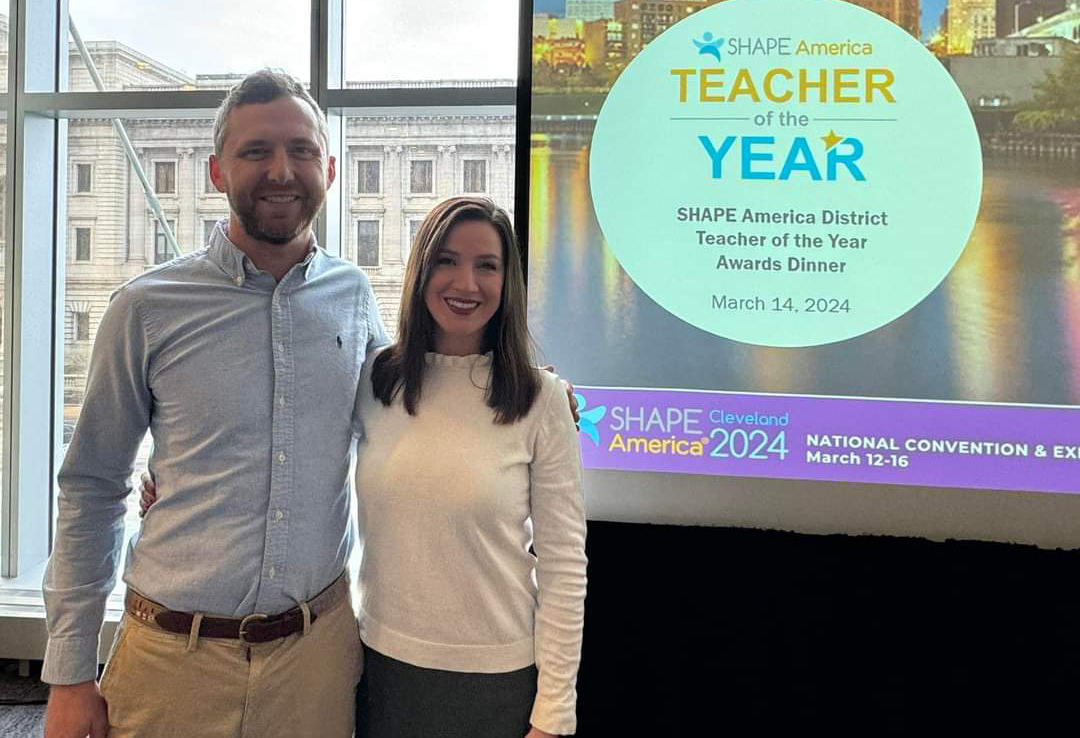
Fourth-grade students Karli Madden and Lisa DeSautel create African masks during George McKee’s art class at E.P. Ward Elementary School (Fleming County). E.P. Ward Elementary is one of 48 schools from 34 districts that piloted Program Reviews in writing, arts and humanities, and practical living/career studies last year. Photo by Amy Wallot, May 28, 2010
Program Reviews in arts and humanities, practical living/career studies, and writing are being implemented in every public school in Kentucky this year. Rather than testing students to see what they have learned, a school gathers evidence about how it integrates the subjects across its curricula and whether the school provides students with high-quality learning opportunities. The school then uses that information to improve its programs.
As school starts, Kentucky Teacher asked Kentucky Department of Education (KDE) staff to answer questions teachers may have as they begin participating in Program Reviews. Members of the Program Review team are: Rae McEntyre, Rebecca Woosley, Stephanie Bunge, Jamie Sparks, Leslie Slaughter, Matt Chaliff and Robert Duncan.
What are Program Reviews?
A Program Review is a systematic method that schools use to analyze components of their instructional programs. The components that schools will look at are curriculum and instruction, formative and summative assessments, professional development, and leadership support and monitoring.
Why is a Program Review better than testing students?
Traditional paper-and-pencil tests limit the evaluation of what students learn. With Program Reviews, schools have more flexibility; students can experience the content and demonstrate their knowledge, skills and understanding in non-traditional ways. For example, in the arts, students may perform a music or writing composition; or demonstrate understanding of physical education skills by working with students younger than themselves.
How do schools conduct Program Reviews?
A description of how a school may conduct its Program Reviews can be found in the guide Program Review Process.
I don’t teach a subject that has a Program Review. Do I have any responsibilities for Program Reviews?
As a content teacher outside of the program areas, you may be asked to sit on a review committee. Also, you may wish to collaborate with program area teachers to make natural connections among the content areas.
Which Program Reviews are my school responsible for in 2011-12?
All schools will be field testing Program Reviews in writing, arts and humanities, and practical living/career studies. Some level of public reporting will occur in spring 2012 for these programs.
What other Program Reviews are planned?
In the future, Program Reviews in world language and a kindergarten through 3rd grade (K-3) program evaluation will be added. In 2012-13, these will be field tested and publicly reported. They will be included in the accountability calculations in 2013-14.
How will Program Reviews be used in accountability?
Program Reviews fall under Next-Generation Instructional Programs and Supports in the accountability model. They will count 20 percent of a school’s total accountability score.
When will Program Reviews be used in accountability?
2011-12 school year – field testing and public reporting of Program Reviews in arts and humanities, practical living/career studies, and writing
2012-13 school year – field testing and public reporting of Program Reviews in K-3 and world language; inclusion of Program Reviews in arts and humanities, practical living/career studies, and writing in accountability calculations
2013-14 school year – inclusion of Program Reviews in K-3 and world language in accountability calculations
What is meant by the term “schoolwide” in the Program Reviews?
“Schoolwide” means that other content areas should incorporate natural connections between the program area content and other academic content. Teachers are encouraged to collaborate across all content areas.
What role does the school-based decision making council (SBDM) play in Program Reviews?
The SBDM will be responsible for receiving the findings of the Program Review team(s) and making policy decisions based upon those findings. The SBDM will then submit the school’s results to the district, which will submit to KDE.
Who makes up a Program Review team?
Review committees for each program area should be determined, as sub-committees of the SBDM, including the following stakeholders:
- teacher representatives who work in the discipline
- teacher representatives from across content areas
- school leaders
The team also may include:
- parent representatives
- student representatives (when possible)
- other relevant community stakeholders
- classified school staff (FRYSC coordinators, custodians, secretaries)
- school media specialists and other certified school staff
What does a school without an SBDM do with the findings before submitting to its district?
If a school does not have an SBDM, then the Program Review results will be received by the person or governing body that is otherwise responsible for school governance.
Which set of curriculum standards do we teach?
Kentucky teachers should be using the Kentucky Core Academic Standards. For English/language arts and mathematics this means the Common Core State Standards. Other content area teachers will continue to use the Program of Studies from 2006 until new or revised standards are adopted.
What is the difference between a Program Review and a Program Assessment?
Only public high schools and Career and Technology Centers (CTC) that have programs in communications, construction, manufacturing or transportation must conduct Program Assessments. All Area Technology Centers (ATC) must conduct Program Assessments.
Schools may use evidence from an ATC or CTC Program Assessment for their Program Reviews. For example, if an ATC or CTC has an articulation agreement, then this evidence could be used for Program Reviews by schools that have students who attend the center.
Are non-A1 schools required to complete the Program Reviews?
Non-A1 schools are not required to complete Program Reviews. However, if a school has students that move in and out of it as an alternative school would, then the student’s home school could use evidence from the non-A1 school as part of its Program Review.
How many artifacts is a school expected to preserve to show the quality of its program?
Not every piece of student work needs to be saved. However, a school will want to identify representative works to use as evidence. Schools also should continue to re-evaluate evidence throughout the school year as their programs continue to develop. Schools should remember that evidence may come from many different sources and some pieces of evidence may apply to more than one characteristic or to more than one Program Review.
What kind of professional development is available to learn more about the Program Reviews?
Kentucky Educational Television (KET), working with the Kentucky Department of Education, has developed five self-paced modules entitled Program Reviews: Purpose, Process and Practice. Schools are encouraged to develop Program Review teams and work through these modules together.
MORE INFO …
Rae McEntyre, rae.mcentyre@education.ky.gov, (502) 564-2106



Valuable comments – I was fascinated by the details ! Does someone know if I could possibly get ahold of a sample B1 version to use ?
When “we say all students” does that mean all students are doing the same thing (assignment,activity, ect)?? At our Middle School 8th graders may do subject specific assignments that 6th graders do not have an academic need for, or do they need a related topic, or activity.